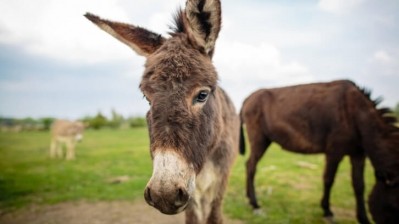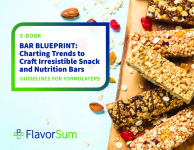Innovation required to milk sheep and camel dairy potential
promising new avenues for dairy processors, providing that
innovation and investment is made to squeeze their potential.
Joerg Seifert, technical director of the International Dairy Federation (IDF), said that while there are already a number of fermented cheese products on the market, an expanded number of applications for non-cow milk was possible in the future.
"New opportunities will arise with the rapid development of innovative technologies that enable ingredient use in order to achieve certain properties in finished products," he told DairyReporter.com.
"For instance, [the products can be used to affect] flavour, texture or nutrition to offer greater choice to the consumer."
Combination potential Seifert stressed that although the varying composition of milk from cows, yaks and ewes continued to limit the uses of a single product, a combination of various produce could herald new areas for development.
"There are a number of cheeses on the market which are produced from mixtures of cow and other milk," he added.
"In countries like India and Pakistan , most dairy products are produced from a blend of cows and buffalo milk since these milks are jointly collected from small-scale farmers."
Production Growth According to IDF figures, last year, Buffalo milk, which is used in the Mozzarella di Bufala cheese, posted a 37 per cent increase in production to 82 million tonnes from ten years previously.
This growth was well ahead of the dominant cows' milk market, which achieved an 18 per cent production increase to 553 million tonnes over the same period.
Production of goats' milk rose by 3.3 per cent to 12.5 million tonnes during the ten years up to 2007, with sheep milk output up by 4.9 per cent to about 8.3 million tonnes over the decade.
However, the amount of milks derived from camel, yak and reindeers remained unchanged over the ten-year period at 1.3million tonnes, the IDF said.
Despite this overall growth, Seifert said that the alternative milks, both in terms of a self-contained product and ingredients, were unlikely to rival cows' milk as a viable supply area.
"They will remain a niche market simply because of the limited volumes of milk production, which cannot be increased to or even beyond the rate of predicted increase of cow's milk," he stated.
"However, in some countries, these milks could gain a higher level of importance in the market because of natural and climate conditions that do not favour the husbandry of dairy cattle, like dry and hot countries that may want to boost domestic milk production from adapted species such as goats."
Supply and demand Although statistics on the actual demand for non-cow milk products, the organisation estimates that current overall demand for dairy products was increasingly annually by about three per cent a year, well ahead of milk production.
The federation claims that many national governments had approved schemes to improve livestock quality.
Similarly, the Food and Agricultural organisation of the United Nations (FAO) is supporting similar commitments to improving infrastructure through projects focusing on production, hygiene, safety and processing capabilities.
"This triggers higher demand and incentives to local farmers to invest in producing higher volumes of good quality milk," said Seifert.
"There are quite a few positive examples of modernisation of the local dairy industries in Pakistan , Egypt and Turkey - all countries in which the production of goats and camel milk is currently expanding."
In order to support production growth in these markets, the IFD says that where possible, it looks to provide science-based symposia and technical workshops for farmers.
The next IDF meeting focusing on sheep and goat milk production, which takes place in Athens.
Greece in 2011, will focus on future trends in science, technology and nutrition in the market for the products, according to the federation.
Seifert said that cheeses such as Bucheron and Caprino fresco, derived from goats' milk, and Manchego from sheep, were examples of extremely popular products on the global market.
Although production of these milks is rising, the industry still has many challenges to face, along with the wider concerns of dairy producers, the IDF added.
"[Major] Limitations for the industry are climate and feeding conditions in some countries which for instance favour "in-stable" cow milk production, the significantly lower milk yield of these species compared with cow," said Seifert.
"Traditional methods of milk production and processing - such as hand milking and batch processing of milk - compared to continuous processing in highly mechanized/automized processes is also a factor" View from the shelf According to some specialist cheese retailers though, another significant set-back for alternative milk products may be major retailers and their attitudes to supplying goods using unpasteurised milk in their stores.
Teddington Cheese, a UK-based independent retailer of a number of cow, goat and ewe cheeses, told DairyReporter.com that products made from alternative milks had proved to be popular with consumers for some time.
However, a spokesperson for the company added though that the cheeses were likely to remain a profitable, albeit niche, source of income for manufacturers.
"There is a specific taste and texture to products made from these milks, which makes them very popular with consumers" he stated.
"They are not often seen at supermarkets, which are often uncomfortable in dealing with unpastuerised cheese products that require more specialist retailing."
Milking demand Supply was perhaps the key difficulty for boosting the alternative milk presence, especially in the UK, where few people are entering dairy farming due to current economic concerns over production costs, the spokesperson added.
"It is proving difficult enough for cow farmers to make profit, so there is little interest or financial incentive for producers to look at alternative milk sources," he stated.
These retail concerns have also been reflect by major European processors.
Last November, cooperative Campina announced it was selling its Chevagne goat's cheese brand to focus instead on semi-hard cheeses derived from cow milk.
Piet Hilarides, group director of the cooperative's Cheese & Butter group, said that although the brand remained profitable, the company's strength came from the best possible processing and sale of cow's milk from its member farmers.
"We therefore want to put all our efforts into the production and international marketing of naturally matured semi-hard cheeses from cow's milk with Campina Milner, Campina Volmer and our unique North Holland cheese at the forefront," he said.















